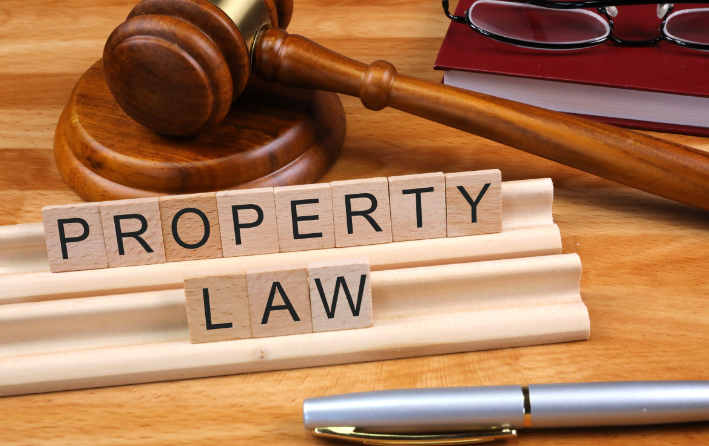Pennsylvania Property Right of-way Laws

Pennsylvania property right of-way laws refers to the legal right to cross or access someone else’s land in the world. In Pennsylvania, these rights can greatly impact property use and value.
Understanding how right-of-way works is essential for both property owners and those seeking easements. These rights are often established through agreements, but they can also arise from long-standing usage.
Pennsylvania recognizes different types of easements that affect how landowners interact with each other. An easement may be permanent or temporary, exclusive or non-exclusive. Each type comes with specific rules and implications.
It’s important for property owners to know if their land includes any existing easements. This knowledge can influence everything from land development plans to future sales. Awareness of these laws helps ensure smoother transactions and happier neighbors in the community.
Types of Right-of-Way Easements
Right-of-way easements come in various forms, each serving a distinct purpose. One common type is the utility easement. This allows companies to install and maintain utility lines across private property.
Another type is a roadway easement, which grants access for vehicles through someone’s land. It’s essential for connecting neighborhoods or facilitating travel routes.
Then there are pedestrian easements designed specifically for foot traffic. These are often found in urban areas where walkways need access across properties.
Conservation easements focus on preserving natural landscapes by restricting development activities on certain parcels of land. They play a significant role in environmental protection efforts.
Understanding these types helps property owners navigate their rights and obligations effectively within Pennsylvania’s legal framework regarding right-of-way laws.
The Process of Obtaining a Right-of-Way Easement in PA
Obtaining a right-of-way easement in Pennsylvania involves several clear steps. First, identify the need for the easement and determine its specific location. This might involve discussions with neighbors or utility companies.
Next, consult local zoning laws and property records to ensure compliance. Understanding existing regulations is crucial before moving forward.
Once you have gathered all necessary information, approach the affected property owner. Open communication can lead to smoother negotiations.
If both parties agree on terms, it’s wise to draft a written agreement detailing rights granted and any limitations imposed. Having legal counsel review this document is often beneficial to protect your interests.
After finalizing the agreement, file it with your county’s Recorder of Deeds office to make it official. This step ensures that future property owners are aware of the easement’s existence and its stipulations.
Rights and Responsibilities of Property Owners with Right-of-Way Easements
Property owners with right-of-way easements hold specific rights and responsibilities. They have the privilege to use the designated path or area as outlined in their easement agreement. This access can be crucial for reaching public roads or essential utilities.
However, these rights come with obligations. Property owners must not obstruct the easement’s use or interfere with those who have permission to pass through. Maintaining clear access is vital.
Additionally, they should respect any conditions established in the easement documentation. This may include restrictions on construction or landscaping that could impede access.
Communication plays a key role here. If issues arise, addressing them promptly helps maintain good relationships between property owners and easement users. Knowing one’s legal standing ensures everyone understands their roles within this shared space.
Dealing with Disputes and Violations of Right-of-Way Easements
Disputes over right-of-way easements can arise unexpectedly. When they do, communication is key. Engaging in open dialogue with the other party often helps clarify misunderstandings.
Document everything related to the easement. This includes agreements, photographs, and any relevant correspondence. Detailed records provide valuable support if legal action becomes necessary.
If informal discussions fail, consider mediation as a next step. A neutral third party can facilitate conversations and help both sides reach an agreement without escalating tensions further.
Should disputes continue unresolved, seeking legal advice may be essential. An attorney familiar with Pennsylvania property right-of-way laws can offer guidance tailored to your situation.
Always remember that maintaining good relationships with neighbors is beneficial long-term. Striking a balance between asserting rights and fostering community goodwill goes a long way in resolving conflicts amicably.
Important Considerations for Property Buyers and Sellers in PA
When navigating Pennsylvania property right-of-way laws, both buyers and sellers must tread carefully. Knowledge of existing easements can significantly impact property value and use.
Sellers should disclose any right-of-way easements during the transaction process. Transparency helps avoid future disputes that could arise from unmentioned rights or restrictions.
Buyers need to investigate property titles thoroughly. Understanding whether a right-of-way exists will inform decisions about land development or personal use.
Consulting with real estate attorneys familiar with local laws is crucial. They can provide insights into how these easements may affect your plans for the property.
Additionally, be aware of potential changes in local zoning regulations that might influence the usability of a right-of-way.
Staying informed and proactive protects both parties’ interests throughout the buying or selling journey.
Conclusion
Navigating Pennsylvania property right-of-way laws can be complex. Understanding your rights and responsibilities is crucial whether you’re a property owner, buyer, or seller.
Always consult legal experts when dealing with easements to ensure that your rights are protected and obligations met. Knowledge is power when it comes to navigating the intricacies of Pennsylvania’s property laws. The more informed you are, the better decisions you’ll make regarding your real estate transactions and ownership responsibilities.



